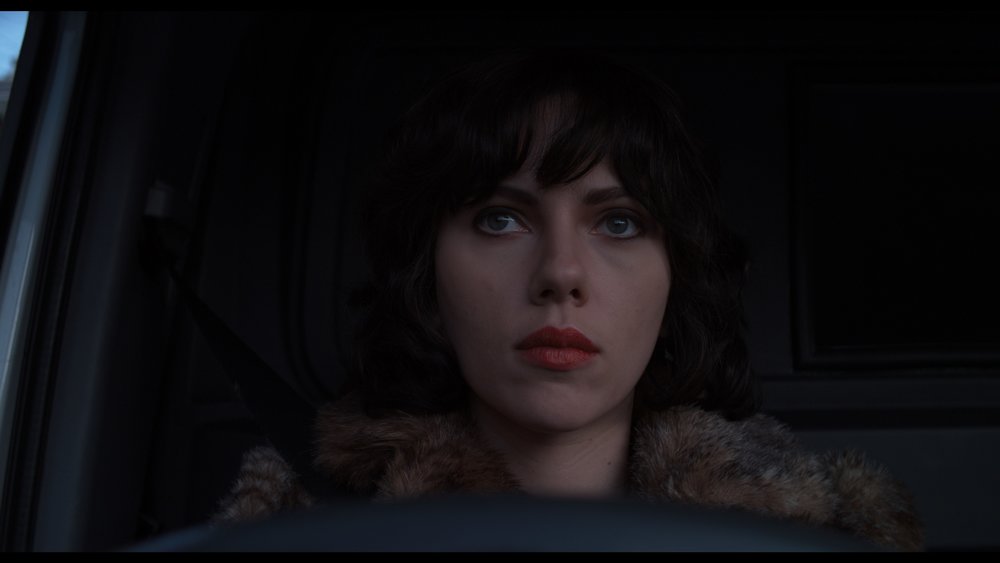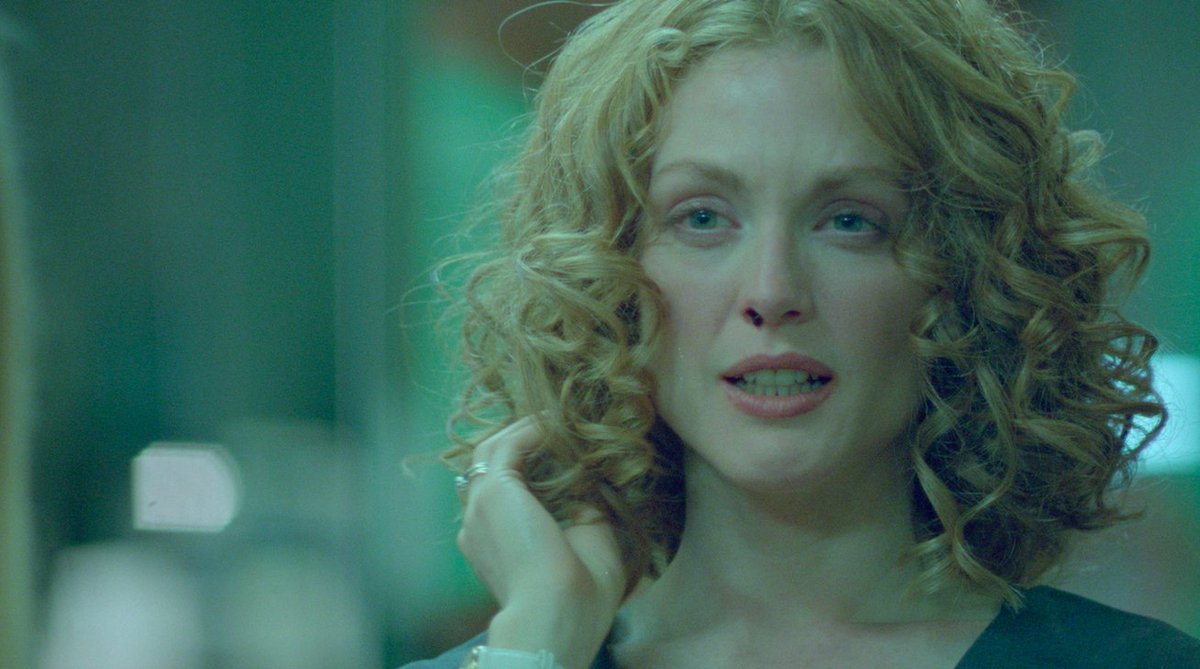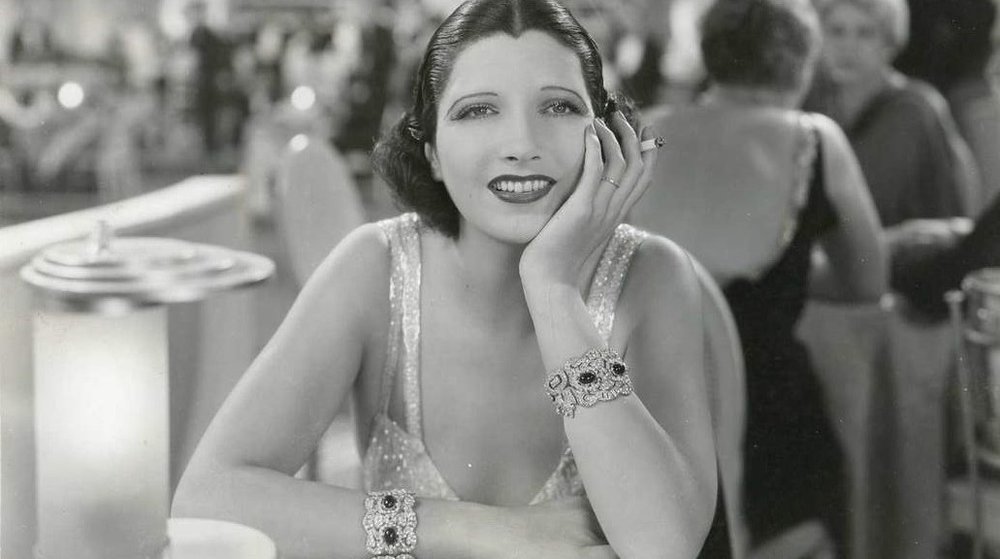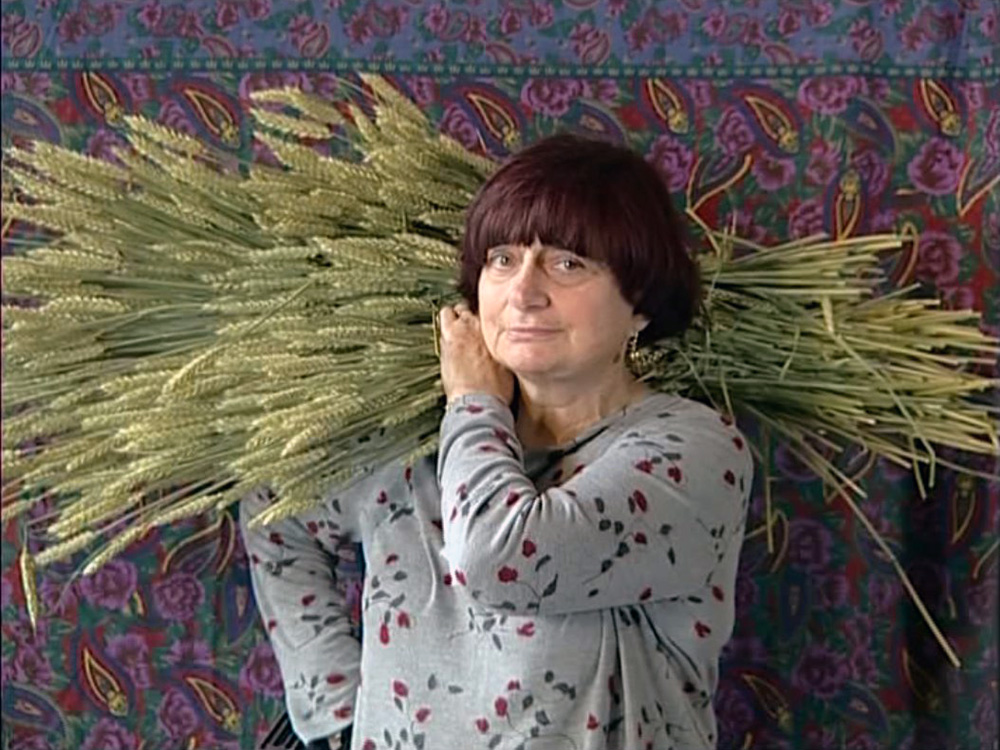Notes on Agnès Varda’s Relationship to Her Own Image
By Sophia Larigakis | 14.02.2021
Patatutopia. Dir. Agnès Varda. 2003.
1. Shrouded in plums or polka dots, Agnes Varda knowingly invites comparisons to kooky grandmothers. Her hair—often a ring of purple around a perfect circle of white, other times a dollop of magenta—is perpetually, resiliently curled under in a bowl cut—a style she chose at the age of 19 and never diverged from, not even in her 90th, and final year around the sun. She stands, somehow, a good foot shorter than everyone around her. “I play the role of a little old lady, pleasantly plump and talkative,” she says near the beginning of The Beaches of Agnes, her 2008 cinematic autobiography. She has even (enthusiastically) been made into a caricature by her friend Christophe Vallaux. Her image, now iconic, is nevertheless undiminished by the fact of having been represented. The zeal with which she doubles, triples, and condenses herself in dimensions and in pen strokes speaks to a deeper understanding of the stakes of representation. Varda is always daring us to write her off as a quirky old lady, as two-dimensional, as an image—knowing full well how such a designation condemns those who dismiss her upon those grounds to a tragically flat experience of cinema, of selfhood.
2. The Beaches of Agnès is an autobiographical film-flaneuse. Flaneuse because it—she—meanders, compulsively. But Varda does not wander anxiously like her Cléo does, pacing within the confines of a harrowing liminality, but rather marches with an unparalleled conviction of sole, propelled by a similarly singular fascination with other people. In Beaches, no sooner have we been teased with a glimpse into Varda’s private life—such a glimpse is, theoretically, what autobiography promises—than the camera has affixed its gaze on a passerby. Varda is, iconically, attentive to the prosaic; her films solicit and render cinematic “ordinary people” without ever romanticizing them into caricature. On a visit to her childhood home in Beaches, our purple-crowned hero evades excess sentimentalism in favour of a spontaneous portrait of one of the current owners of the house—and his model train collection. A cursory glance at the strange and overgrown garden where Varda spent her youth, a moment of reminiscence, and then she fixes the gaze of her camera on the monsieur with his train set, which he, cupping replica cabooses like firstborns, proudly announces is worth millions. Varda, naturally, is rapt.
Beaches of Agnès. Dir. Agnes Varda. 2008.
3. Beaches, then, is a film with a wandering eye. In the film’s opening scene, Varda and a gaggle of youths set up mirrors on a beach. In what should have been a visual terrain constructed for the purpose of self-reflection on the part of the filmmaker, Varda instead turns the mirrors onto her helpers, who obediently look into them and introduce themselves, as if anyone were watching Agnes Varda’s autobiographical film to learn and then immediately forget the names and faces of “the young people who helped [her] carry the mirrors.” It’s sweet. But more than that, it’s idiosyncratically Varda. As Sandy Flitterman-Lewis notes in a conversation about the filmmaker for Another Gaze, “Varda has invented a completely new definition of the personal, a kind of social subjectivity that is constantly formed in relation to others.” Her reluctance to focus on herself—even in the realm of memoir—is neither a lack of self-awareness nor a form of false modesty. All the strangers and digressions and seemingly arbitrary fixations both constitute Varda and exemplify the approach to life and work she pursued: elastic, intimate, and collaborative.
4. Varda appears, in some form or another, in nearly all of her films: she lends her voice to the soundtracks of Vagabond (1985) and Reponse de femmes (1975); as herself in, among others, The Gleaners and I (2000), Uncle Yanco (1967), and Jane B. par Agnes V. (1988); and borrows, as all artists do, from her own memory for Nausicaa (1970), Diary of a Pregnant Woman (1958), and several others. This insertion of herself—or bits and pieces of herself—does not function, like the cameos of Hitchcock and Tarantino, among a backlog of other mostly white male directors, to jolt the viewer out of their identification and back into their bodies, or to serve some narcissistic-auteurist function. Nor is it quite in the same vein as the feminist work of the sixties and seventies that centred the female body as a way to reclaim it from the male gaze. Rather, there is an organic quality to the ways in which Varda slips in and out of her films. Her presence is seamlessly integrated, reassuring in the way that things are when they were always meant to be there.
5. One of my favourite Varda cameos features only her hand. While in a car on a highway in The Gleaners and I, she mimes entrapping passing trucks by slowly enclosing them in an “O” made with her fingers—all the while extolling the benefits of the new handheld video cameras, with which she can, and does, “film with one hand [her] other hand.” There she is: one limb in control of representation, the other an integral part of the filmic landscape; one part facilitator, the other part gently, wittily, wreaking havoc on convention; one hand filming the other hand.
Patatutopia. Dir. Agnès Varda. 2003.
6. For the opening of the 2003 Venice Biennale, Varda traded in her aubergine robes for a potato costume. Or, more specifically, a “talking potato” costume. The spud-suit, made of resin and wired up with speakers, spouted (sprouted?) the names of various types of potato—vitelotte, doré, Kennebec—as Varda marched through hoards of art aficionados and tourists, her guise a gleefully irreverent counterpoint to the self-seriousness and capitalist fervour of this fair of fairs. The costume is part of her work Patatutopia, a three-channel video installation which debuted at the Biennale and consists of loving shots of potatoes—with sharp cuts to Varda’s face among the piles—and 1500 pounds of potatoes on the floor. Varda’s potato costume serves as a kind of anti-merch, an uncommodifiable action figurine accompaniment to Patatutopia. When Varda left the festival, the costume remained, still naming spuds, now with a cardboard cutout of the artist’s face atop its lumpy frame.
7. Varda rendered herself in cardboard again in 2018. When she couldn’t attend the nominee lunch for that year’s Oscars, the first to recognize her work (she was busy!), she sent cardboard cutouts of her likeness—in various poses—in her stead. Once again, Varda is uniquely generous with her image—she is ours to share, to partake of. And yet, even as cardboard Vardas are passed amongst celebrities, her image is never completely reified, never irrevocably untethered from her self, her work. She is iconic, but seemingly unburdened by signification. Varda is never so invested in, or attached to her own image that it overtakes her, like the mop of hair that covers her eyes in Vallaux’s caricature.
A cardboard cutout of Agnès Varda at the 2018 Oscar nominee lunch.
8. In a scene in The Beaches of Agnes, we follow the filmmaker as she sifts through antiques and other discarded objects at a flea market—one of her favourite activities, she is, after all, a gleaner. She comes across a box full of cinema cards and finds one featuring herself and another featuring her late partner, Jacques Demy. Holding them to her chest, Varda muses, “before we were cinema cards with heads made of cardboard, we were flesh and blood beings.”








